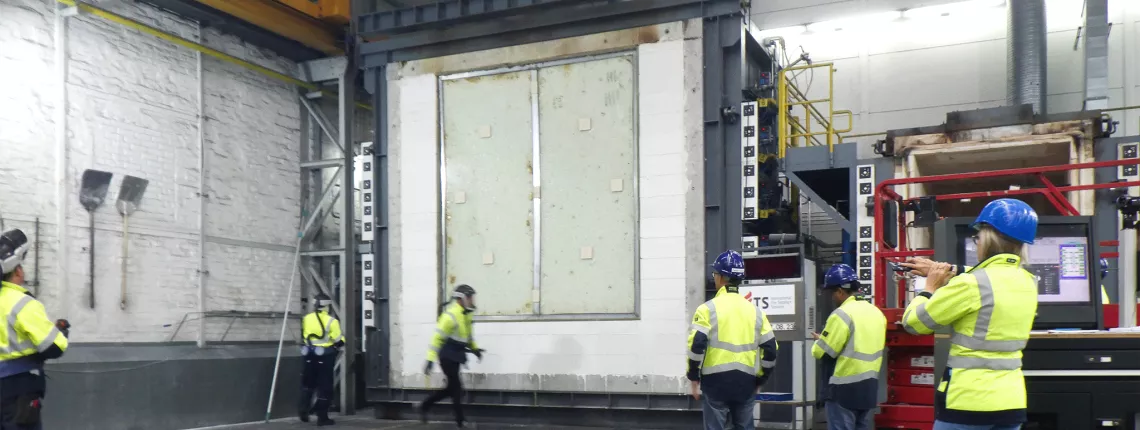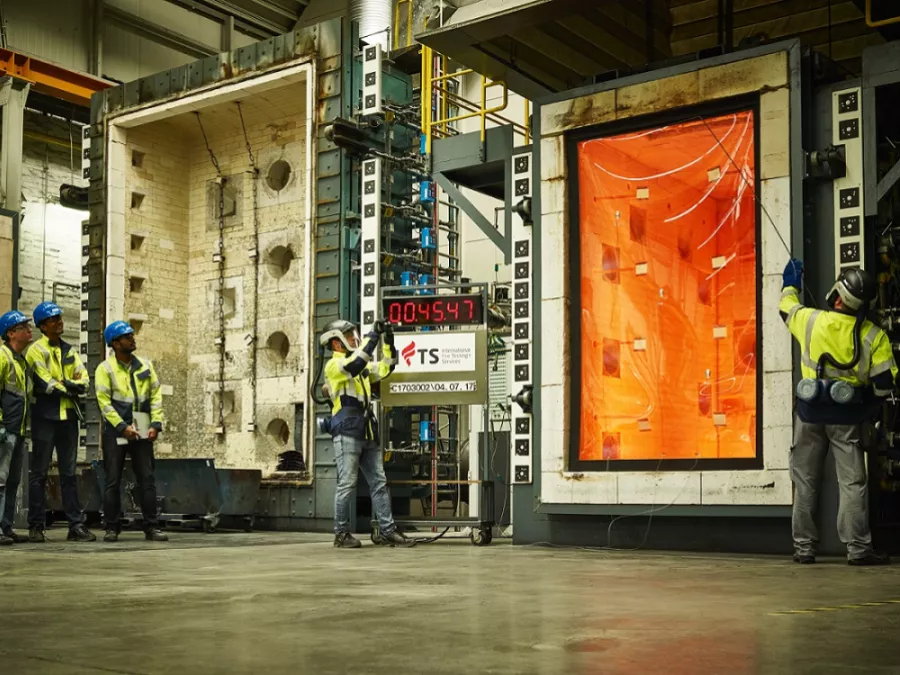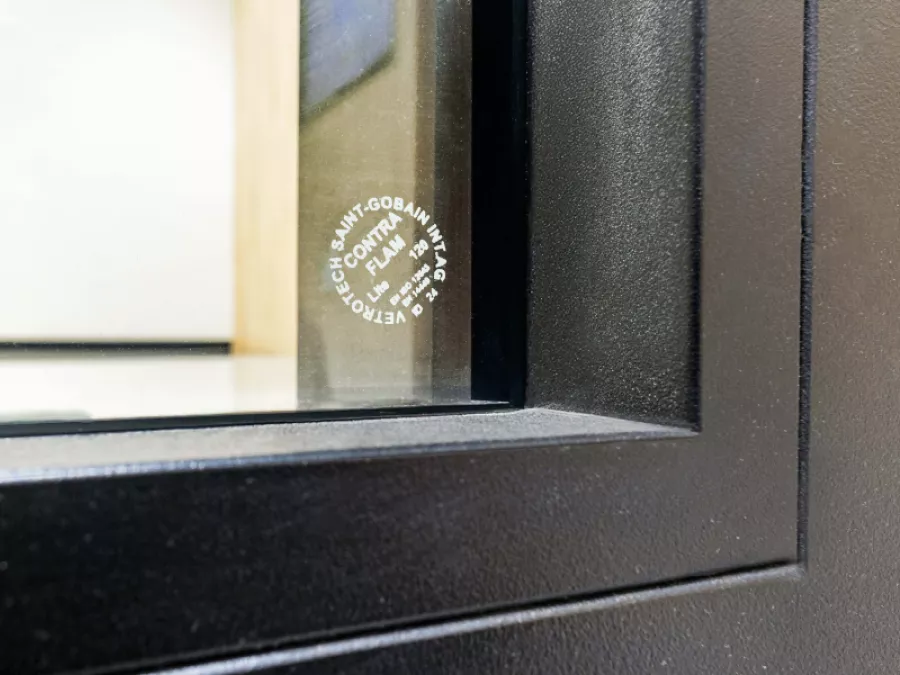What is Fire Resistance Testing? Types & Importance Explained

Fire resistance testing plays a crucial role in modern construction by ensuring that materials and components can withstand the real time conditions of a fire. This testing helps safeguard lives and property, providing peace of mind to building occupants and designers alike.
Did you know that buildings constructed with fire-tested materials significantly reduce the risks of fire-related fatalities and property loss? Fire resistance testing is the foundation of safer building practices, evaluating how materials behave under high temperatures and ensuring they meet rigorous safety standards.
What is Fire Resistance Testing?
Fire resistance testing is a standard evaluation process that examines the performance of materials, components, and assemblies under fire conditions. Using standardised methods, it measures attributes like structural stability integrity, insulation, and radiation control, offering insights into how materials behave when exposed to high temperature.
These fire resistance test methods help determine how well a material can withstand fire and ensure it adheres to the appropriate fire resistance test standard.
Purpose of Fire Testing
- Safety Assurance: Fire testing ensures that building materials can prevent the spread of fire, buying crucial time for evacuation and firefighting.
- Compliance with Standards: It verifies whether products adhere to international fire safety standards, such as ISO, BS, EN, ASTM and UL and national safety standards such as IS for India, TCVN for Vietnam, GB for China and CNS for Taiwanese
- Performance Evaluation: Testing determines fire resistance ratings like E, EW, and EI, ensuring that materials meet the expected performance criteria.
- Product Development and Improvement: Manufacturers use testing to identify strengths and weaknesses, driving innovation in fire-resistant technologies.
- Risk Reduction: By validating the effectiveness and compliance of fire-resistant system , fire testing minimizes potential loss of life and property.
- Market Certification and Trust: Certification from testing builds confidence among customers, designers, and fire authorities, ensuring reliable and trustworthy fire-rated solutions.
How Fire-Resistant Glass Is Tested
- Test Conditions: Fire-resistant glass is rigorously tested with its frame and surrounding materials to replicate real-world conditions. This ensures the glass performs effectively as part of a complete fire-resistance system, addressing factors such as thermal expansion, flammability material compatibility, and durability during a fire scenario.
- Standards and Certification: All fire-resistant systems undergo testing in external independent laboratories, adhering to either international standards such as EN, ISO, ASTM, and UL or local testing standards such as IS for India, TCVN for Vietnam, GB for China and CNS for Taiwan depend on the countries regulation and acceptance.
- Reaction to Fire Test Methods: In addition to fire resistance tests, some products also undergo reaction to fire test methods to assess their ability to resist the spread of flames and slow down combustion. These tests focus on how materials perform in the early stages of a fire, helping to prevent the fire from escalating quickly and giving more time for response.

Fire Resistance Classes
1. E (Integrity)
The "E" classification focuses on maintaining the integrity of the system by compartmentalizing flames and hot gases from fire side to cold side . This ensures fire containment within a specific area, reducing the risk of its spread to adjacent spaces. E rated systems are commonly used in areas with less occupancies.
2. EW (Integrity and Radiation Control)
EW-class glass combines integrity with radiation control, minimising the radiant heat to less than 15 KW/m2 at 1 meter distance from the specimen to the non-fire side. This feature enhances safety by reducing the risk of igniting nearby materials or causing harm to individuals. It is ideal for corridors, staircases lobbies and elevator lobbies.
3. EI (Integrity and Insulation)
EI-rated glass offers the highest level of fire protection by combining integrity with thermal insulation maintaining the surface temperature rise less than 180-degree Celsius. The glass's special interlayer prevents heat transfer from the fire side to the non-fire side, ensuring the surface temperature remains safe. This makes EI-class glass suitable for areas with high occupancies and expensive property
Why These Classifications Matter
These fire resistance classes cater to diverse safety requirements, ensuring that architects, builders, and facility managers can select the appropriate solution for specific applications. From basic flame containment (E) to advanced insulation (EI), these classifications provide a clear framework for meeting regulatory and functional fire safety needs.
The Importance of Fire Resistance in Building Safety
- Fire Prevention
Fire-resistant materials, such as specialised glass, play a critical role in preventing the spread of fire, smoke, and toxic gases. By containing these elements, they help protect occupants and minimise the risk of fire reaching other areas of a building, reducing potential damage and casualties.
Fire-resistant glass contributes to clear evacuation routes by compartmentalising fire zones. This ensures safer passage for occupants and keeps stairwells, corridors, and exits free from flames and smoke, providing vital time for people to escape during emergencies.
Monolithic fire-resistant glass used for vision panels in electrical rooms etc allows visibility for emergency services, enabling them to assess the situation and respond quickly. It also facilitates swift access to affected areas, enhancing the effectiveness of firefighting and rescue operations while safeguarding responders.
Trust Vetrotech for Unmatched Fire-Resistant Glass Solutions
When it comes to fire safety, high-quality glass solutions are essential in ensuring the protection of lives and property. With an extensive range of fire-resistant glass and systems solutions, building owners and architects can rely on tested solutions that offer both safety and aesthetic appeal.
At Vetrotech, we pride ourselves on delivering advanced, fire-resistant glazed solutions that are fully compliant. With a focus on innovation and quality, we ensure our products provide the protection needed without compromising design.

